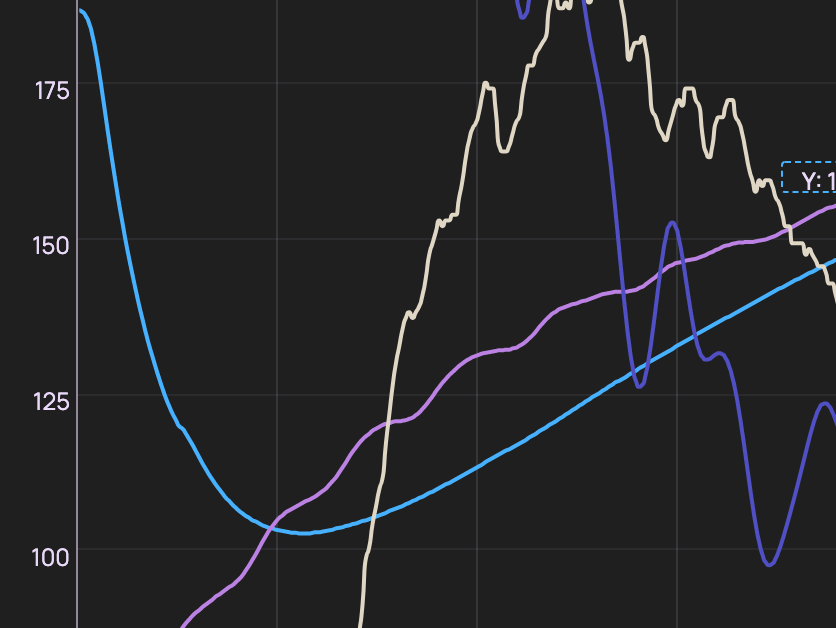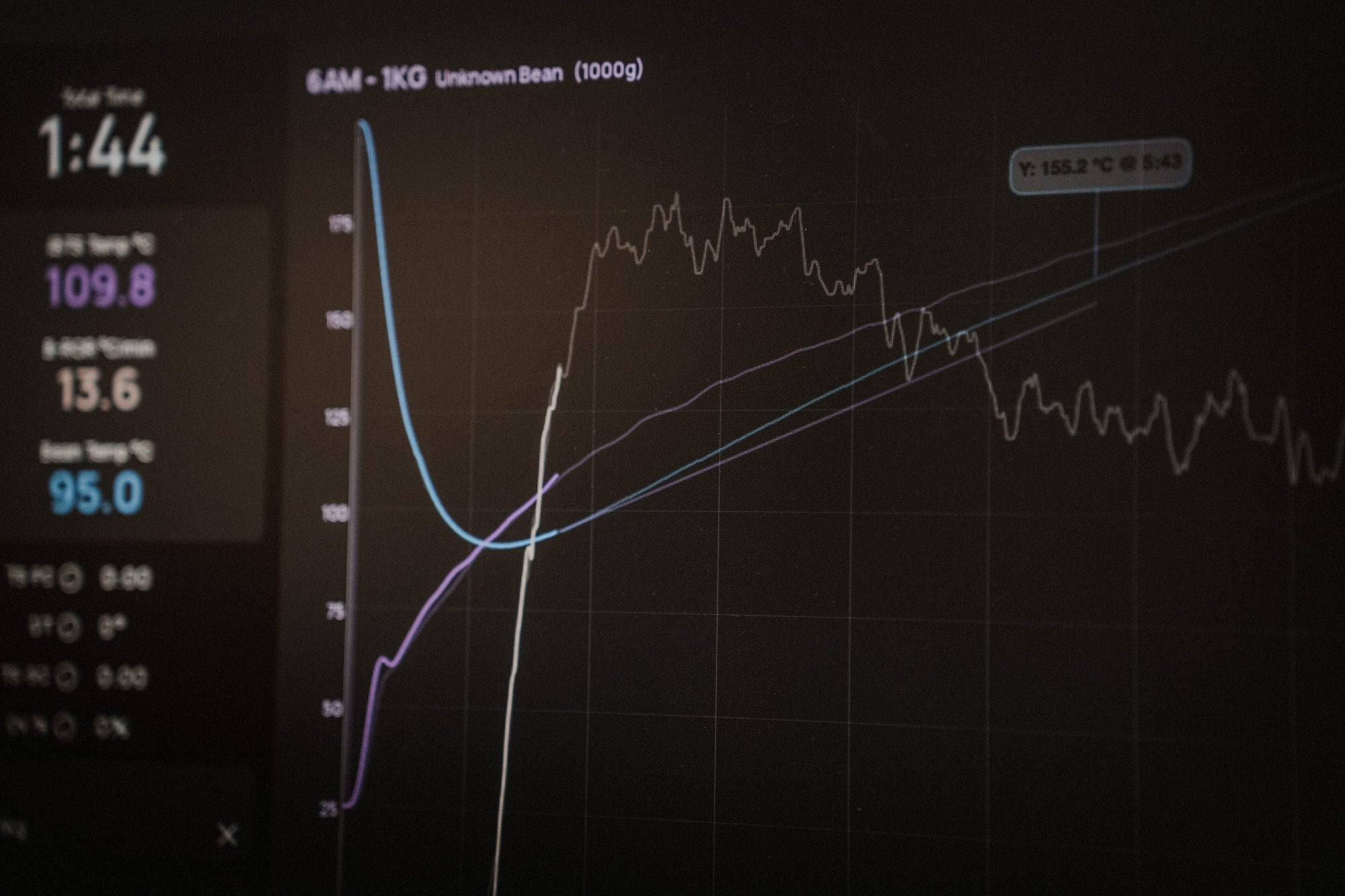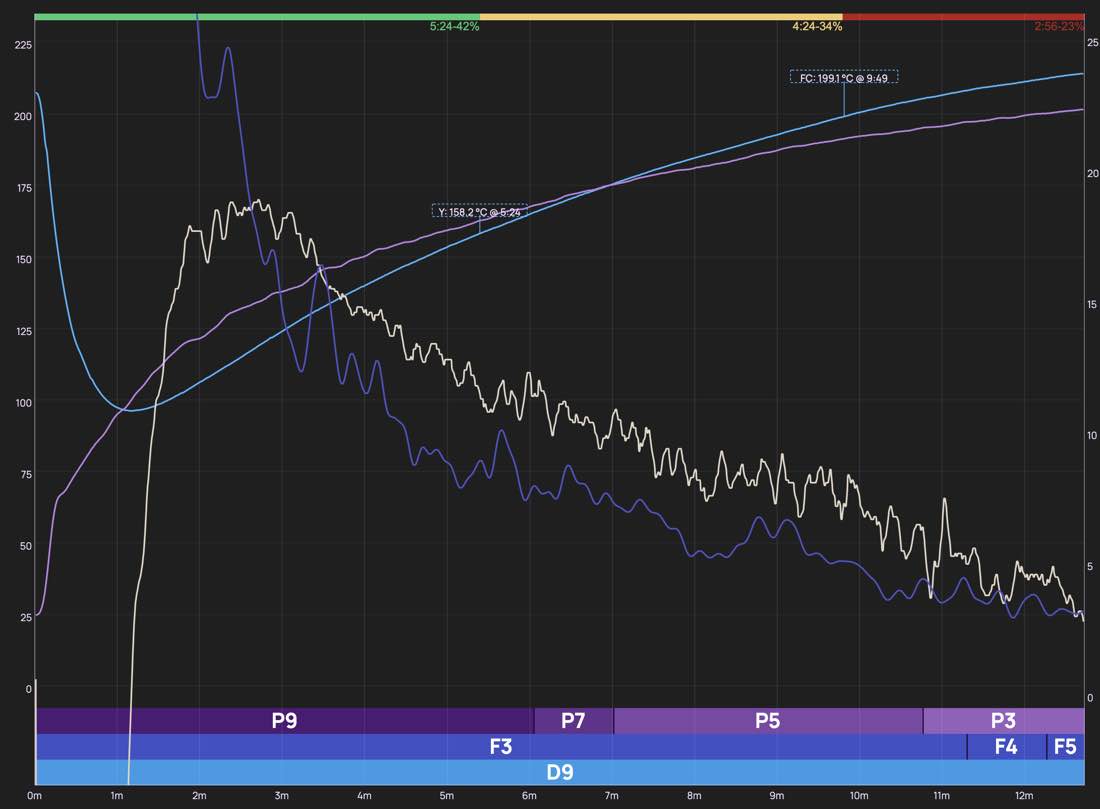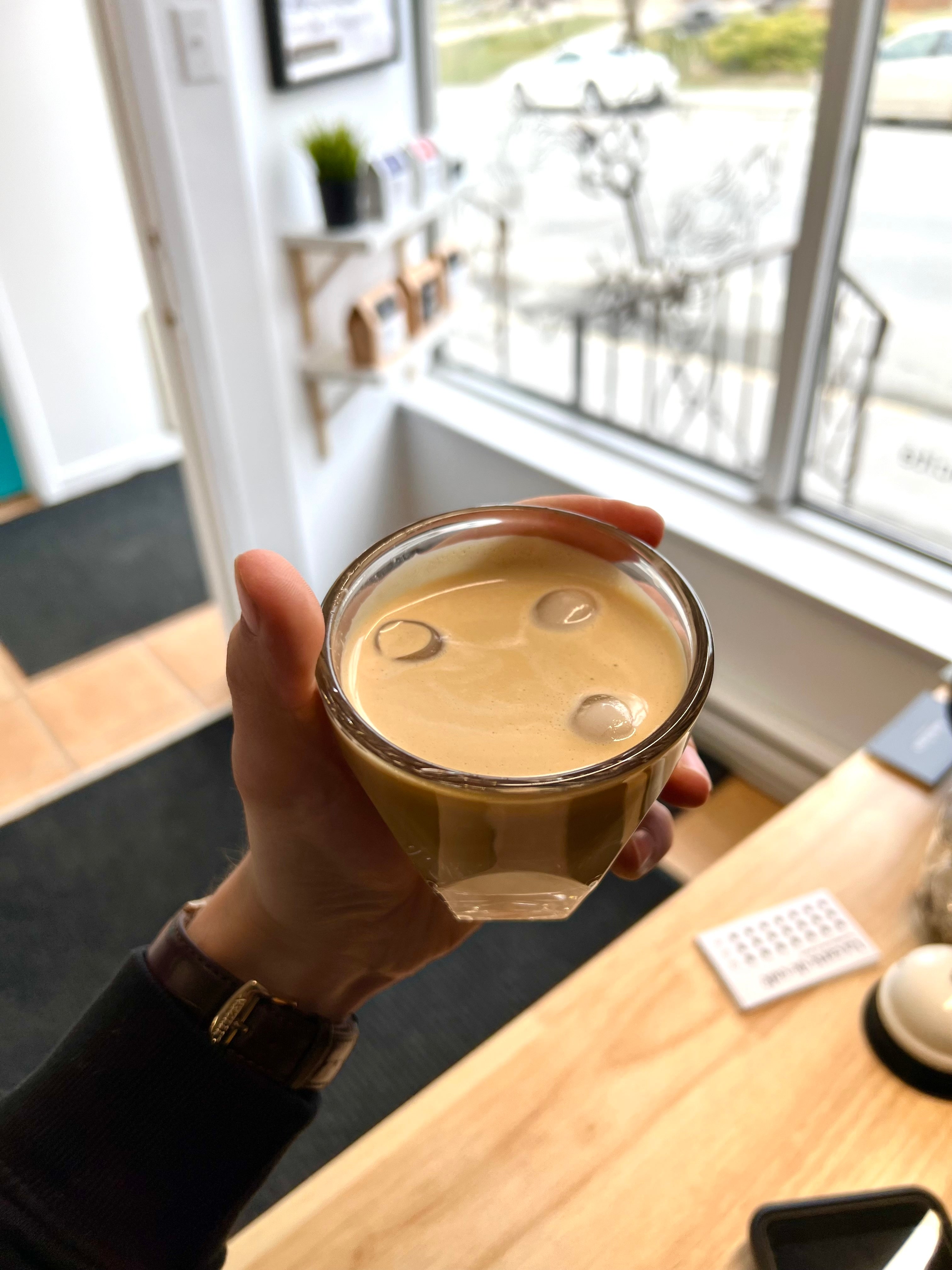Free shipping across Canada 2 bags or 1kg 🤩
The Turning Point In Coffee Roasting
Last edit Apr 4, 2024 ● Published Apr 4, 2024 ● Louis-Charles Blais
When roasting coffee, you could easily say the temperature of your beans is one of the (if not the) most important variable to have access to. It can be tricky to get a perfect reading of your bean temperature as many variables come into play to mess up readings and as some situations are expected to de-validate sensor readings. Today we’ll touch on an important part of roasting where data is often misinterpreted are where you need to have an good understanding of roasting principles to master it. Let’s understand the turning point.
What’s the turning point?
When beans are dropped in the roasting machine, the temperature of the coffee beans is much lower than the roaster’s internal temperature. During the first moments of the roast, the temperature of the roaster will drop and the bean’s temperature will rise. At one point, both will get to an equilibrium which we call the “Turning point”.
Basically, the turning point is the point in time and temperature where the coffee beans and the roaster get to the same temperature.
What’s a good turning point in coffee roasting?
While there is no good answer or magic recipe for establishing a “good” turning point, we can assume the turning point is going to happen somewhere in the first minute of the roast. If your turning point is happening too late, it might mean your drop temperature is too low or your roaster doesn’t have enough thermal energy accumulated. If it’s well before the one minute mark, you might be over-heating the roaster and potentially scorching your beans.
Again, there is no magic answer as to what’s a good turning point as every roasting machine is different, every bean reacts differently to agressive heat, etc.
Why is the turning point considered a false reading?
When you drop your beans in the roaster, you can assume the beans are at room temperature while to roaster’s internal temperature might be around 200C. Unless you have an infrared sensor or some sort of non-analog temperature reading device, we can assume your temperature probe is itself around 200C. When you drop the beans into the roaster, the temperature probe is going to touch the cold beans which are going to progressively cool it down. For a moment, the probe will send reading of beans “cooling down” when in reality, the beans are actually heating up and both elements are creating a temperature equilibrium.
Due to drastic temperature changes, the data obtained before the turning point is irrelevant as we will always get the middle ground between the probe’s initial temperature and the bean’s current temperature.
When the rate of rise (ROR) is going over 0, we can assume that equilibrium is obtained. If the temperature probe is reading a temperature rise, it means the beans must be heating the probe up as they now are touching it constantly. This is where the data becomes actually usable.
The real ROR before the turning point
Something interesting to look at is the real ROR before the turning point. As the coffee is dropped in, the temperature instantly starts to climb up at an incredible speed even if our probe says it’s decreasing. The first minute of the roast is actually the part where the coffee is heating up the fastest, even if we can’t really measure it with a standard probe. It becomes very interesting to figure out the real ROR with an infrared sensor to have a clear idea of potential over-heating or scorching. In our case, the Aillio Bullet lets us see this data with the IBTS sensor.
A word on drop temperature
While the data before the turning point can be irrelevant, the only way to make sure this phase is kept under control is to have a good drop temperature. While the drop temperature can be its own blog article, I thought important to mention here that the drop temperature is the variable we have control on that can really make a difference in the pre-turning point phase.
Too much heat on the drop can scorch your coffee and create astringency even if it’s not visible on the beans.
In conclusion : Cup, cup and cup again
Looking at the bigger picture here, I think the lesson to be learnt here is that the turning point will probably always be the most unclear phase of a roast data-wise. The only way to know if we’re having it under control is to cup our coffees, look for roast defects like astringency or under-development to know if we’re being too agressive or too soft on our coffee.
Finally, the turning point is far from the most important variable to influence the roast but it’s essential to understand how it works and why it’s appearing like that on our graphs.
The ultimate key to making perfect coffee?
Freshly electric roasted specialty beans

Eldorado - Best seller for 3 years
An affordable specialty coffee from Brazil. Medium roast with comforting chocolate aromas. Ideal for a well-balanced, smooth, and comforting espresso.
Eldorado is produced by the Barbosa farm in Brazil, a partner of Nucleus for 3 years now.




Comments
There are no comments.
Your comment